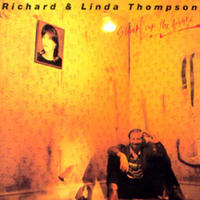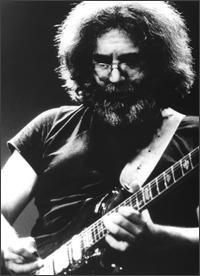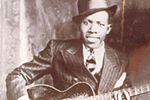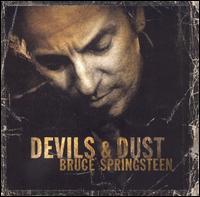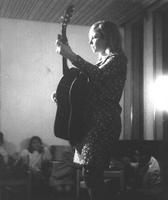1. Dark Side has sold approximately 34 million copies worldwide.
2. The album hit number one on the US charts for one week in 1973. David Gilmour had had a bet with manager Steve O'Rourke that the album wouldn't crack the US top 10.
3. In the UK the album made it to the number two spot. When it was re-mastered and re-released for the 20th anniversary in 1993 with special packaging it made it to number
4. In Belgium and France it was No. 1, No. 2 in Austria, No. 3 in Australia, and No. 4 in Holland; it was No. 5 in Spain, Finland and Germany but not at the same time, and made it to No. 8 in Brazil in August 1973.
5. The album is listed in the Guinness Book of World Records for being on the charts longer than any other album in history, namely 591 consecutive weeks or 11.4 years in Billboard top 200! A total of approx 14 whole years (741 weeks) in and back in top 200, and a staggering 26 years in some Billboard chart or other.
6. SoundScan, the chart tabulators in the US, recently listed the top 200 selling albums of the year 2002. Dark Side was again on that list. It sold roughly 417,000 copies in the US last year, making it the 200th top selling album. It is by far the oldest album on the list.
7. The original title for the album was Eclipse (A Piece for Assorted Lunatics). The band were upset to find out that the progressive folk rock act Medicine Head had released an album with the title of "Dark Side of the Moon" as recently as 1972 on John Peel's Dandelion label. Since the release was less than successful sales-wise, the band decided go ahead with their plans.
8. The music and lyrics for the entire album were written during a seven week period in which the band were preparing for a tour in which they desperately wanted to premier new material.
9. Cue Cards with generic questions were written up by Roger and given to roadies, anyone at Abbey Road, doormen, and members of Wings including Paul and Linda McCartney. Approximately 20 questions were asked along the lines of, "Are you afraid of dying?". "When was the last time you were violent and were you in the right?", and "What does the phrase 'The Dark Side of the Moon' mean to you?". The most spontaneous answers to these questions appeared on the album. Paul and Linda didn't make the cut but Wings' guitarist Henry McColluch did providing the "I don't know I was really drunk at the time" response to the question regarding violent behaviour used at the fade out of Money.
10. The "stoned" laughter used in the background of Speak to Me and Brain Damage is from Peter Watts, a road manager for the Floyd pictured on the back of the Ummagumma sleeve. His daughter, Naomi Watts, is a famous actress that has appeared in several films and was named one of the 50 Most Beautiful People by People Magazine in 2002. Sadly, Peter Watts died of a drug overdose in 1976.
11. Studio time would be typically interrupted for one of two reasons, either soccer or Monty Python television broadcasts. In fact, Pink Floyd were such Python fans that they used some of the money they made from the initial success of the album to help fund Monty Python's The Holy Grail film.
12. The album was recorded at Abbey Road on then state of the art 16-track equipment. Roger created the tape loops necessary to achieve the rhythmic chiming of the sound effects for Money. Due to the technology of the time, this meant physically cutting and mending bits of tape together in precise measurements using a ruler and feeding these manually into a tape machine for duplication.
13. The slide guitar heard on Breathe was a pedal steel that David Gilmour purchased in a pawnshop in Seattle back in 1968.
14. Alan Parsons recommended Claire Torry for vocal duties on The Great Gig in the Sky. At the time Torry was an EMI staff songwriter who wanted to branch into vocals. Torry was paid double the standard session wage at the time for this particular session since it was on a Sunday. At the time, she was very happy with what she received. No one could foresee the impact and longevity the resulting album would have.
15. Parsons received a Grammy as the record won the "Best Engineered Album" award.
16. Australian radio listeners voted the album the best album to have sex to in 1990.
17. The album marked the first time that Roger Waters wrote all of the lyrics. He has stated that he made a conscious effort to employ words that were very straightforward and easy to understand.
18. The album was first performed live at the Dome in Brighton, England on the 20th of January 1972. Due to a tape malfunction, the concert only made it as far as 'Money' that evening, but the band continued to perform the suite at almost every show after that date right up until a performance at Knebworth on the 5th of July 1975.
19. Hipgnosis studio suggested the album be issued as a gatefold with inserts of two posters, one for fans (photos of the band) and one for art (photo of pyramids), and two stickers, day and night, which refer to the touring aspect in the lyrics . All this was to be housed in a card box. EMI agreed to everything except the box. Hipgnosis provided the outer cover design, the prism against black, which referred to the band's inventive use of lights on stage, the triangularity symbolising mad ambition, and the cool graphic in answer to a request from Richard Wright for something less pictorial and more iconic.
20. The design of the inner spread of the gatefold, featuring the spectrum heartbeat, echoing the audio heartbeat at the beginning of the album, was an idea from Roger Waters.
21. Us and Them was originally written by Richard Wright in 1969 as an instrumental piano solo intended for use in Michelangelo Antonioni's Zabriskie Point film which the band had been commissioned to score. The piece, then known as The Violent Sequence, was to be used over slow-motion scenes of student / police riots at UCLA. It was rejected for the film and resurrected for Dark Side after Waters penned the lyrics. Tapes exist of the band performing it as The Violent Sequence early in 1970.
22. The Great Gig in The Sky was originally known as The Mortality Sequence. It featured a similar piano introduction but no female vocals. Instead, taped readings from the Book of Ephesians, a recital of The Lord's Prayer, and a narrative from Malcolm Muggeridge, a controversial host of a religious program on the BBC, were used.
23. A rough version of Brain Damage was written around the time of Meddle and was actually known as "The Dark Side of the Moon".
24. The inspiration for Breathe was from a song Roger Waters had written and recorded in 1970 as part of the soundtrack for a film about human biology called "The Body". The opening lyric is the same in both songs. The original song was a protest of man's destruction of nature for profit, a theme that has appeared on more than a few Waters' compositions.
25. Although the band made a point of not releasing any singles in Great Britain for ten years after 1969's Point Me at The Sky failed to make an impression, two singles from the album were issued in the States. An edited version of Money was issued in May of '73 backed with Any Colour You Like. This peaked at number 13 on the Billboard Top 40. An edited Us and Them backed with Time ("severely" edited with the rotatoms spliced unnaturally onto the end of the song in place of the Breathe reprise) was also issued in February of '74. Despite heavy FM airplay, the track wasn't AM radio friendly enough and the record only made it to 101 on the chart.
26. The album has been released in various audiophile pressings and limited collector's editions including coloured vinyl editions. Colour completists would need to find a German pressing on white vinyl from 1977, both blue and clear vinyl versions from France also pressed in the late 70's, an Australian pink vinyl version (of the quad mix!) from 1988, and another white one from Holland also from 1977. In addition, there are two official picture discs of the vinyl version still circulating the collector's markets, one from the US on Capitol, and one from the UK only briefly available as part of a box set "The First XI" that was released in 1979 (only 1000 were made available to the public).
27. EMI organized a launch of the album for the press at the London Planetarium. An interesting choice since at this time the band was trying hard to shed their image as a space-rock band. The quadraphonic mix, supervised by Alan Parsons, was to be used for this reception but instead the band learned that the record would be played back in stereo and through an inferior sound system. Only Richard Wright showed up. Life size cardboard cut-outs of the other band members were used in their absence.
28. Pink Floyd were excited to be able to develop new material on the road but were horrified to learn of a bootleg album that was released of a complete performance of the piece recorded in February of 1972 at the Rainbow Theatre. The bootleg was issued a mere six weeks after the concert, about a full year prior to an official release. Professionally packaged, the unit reportedly sold in excess of 100,000 copies, many thinking it was the real thing.
29. Throughout the 1990's rumours persisted that the album was intended to be played back while watching The Wizard of Oz. Many similarities were depicted between the music, lyrics, and the film. The band have denied that the classic film made an impression on them while recording the album, but if you want to judge for yourself be sure to start the CD at the third roar of the MGM lion at the start of the film!
30. A little known fact about the album is that at the end of Eclipse, just as the final voice states that "there is no dark side of the moon really, as a matter of fact it's all dark", if you listen very closely, perhaps with your headphones on and the volume full blast (preferably with the new 5.1 SACD), you will hear an instrumental, muzak version of Ticket to Ride by the Beatles being played in the background. It was probably being played in the main offices of Abbey Road where the record was recorded and picked up by the microphones, perhaps while conducting the interview with Jerry Driscoll, the doorman at Abbey Road, which led to the response heard












